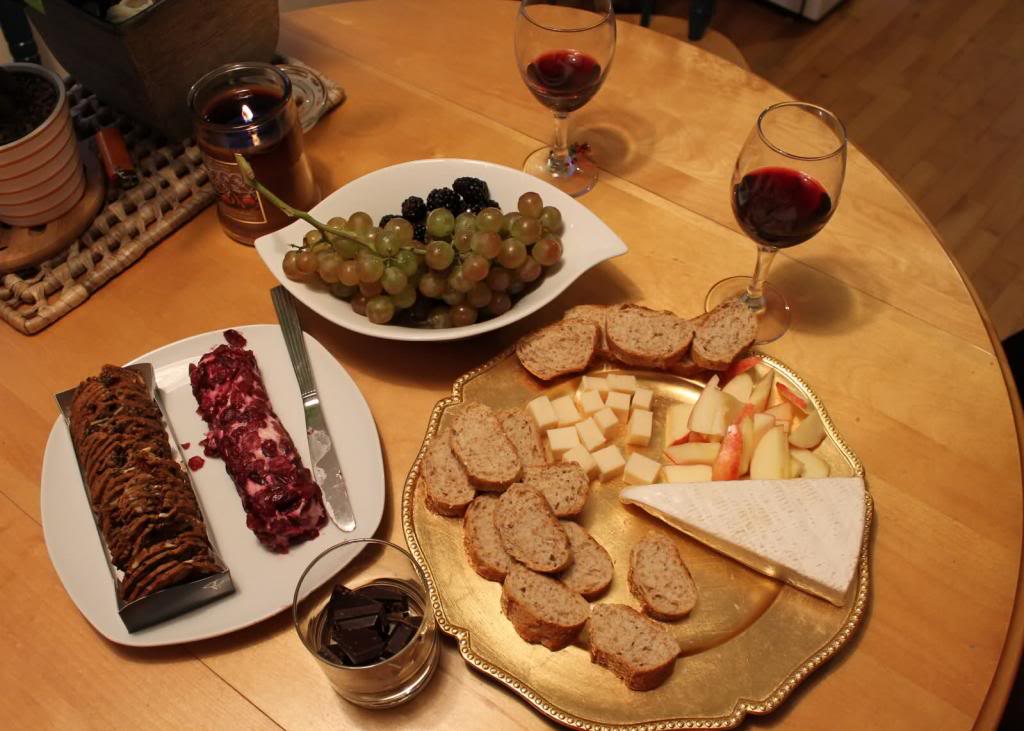Spoiler alert blog reader! There may or may not be another blog meet up in the works. It’s been a long time coming, but I think it’s fine time we put our best efforts into action. So much of blogging is done behind a computer screen, but it’s important for us bloggettes to get out there and mingle! With this in mind I’ve put together a little post to help you navigate how to assemble the perfect cheese plate because let’s face it, a girls gotta eat!
When hosting a party, an easy and delicious choice for food is a great cheese plate! It’s easy to prepare, and a go-to for any wine lover. A good rule of thumb is to take the majority of your cheeses out of the fridge 1 hour before guests arrive, so your cheese has a chance to come to room temperature.
Sources:
The type of cheese depends on what kind of milk is used to create the cheese. The three main types of milk used for cheeses are, goat, sheep and cow. Here are some brief explanations to help you choose which source you you prefer.
Goat: Goats eat everything, and therefore the taste of goat cheese can really vary depending on their diet. Goat cheese goes really well with white wines like Chardonnay and Chablis. Goat cheese does not go well with red wine because the acidity of the goat cheese with overpower the taste of wine. You always want your cheese and wine to compliment each other, and not cancel the other out.
Sheep: Slightly creamy and almost buttery these pair exceptionally well with reds like Pinot Noirs or Tempranillos.
Cow: These cheeses are probably the ones that you and everyone else is most familiar with, but there are so many different kinds that it’s difficult to match perfectly to wines because they all vary so much. These cheeses include cheddar, Parmesan, and brie.
Texture:
When choosing cheeses texture is also very important. Cheeses can be soft (spreadable e.g. Brie), semi-soft (soft, but able to slice e.g. Gouda), and hard (slice-able cheese and usually aged e.g. Cheddar).
Variety:
A cheese plate is only as good as it’s choices; you need to have a variety cheeses and textures. Everyone has their preference, and you don’t want too much of one particular kind of cheese because you never know where people’s preferences lie. Make sure to include various textures: soft, semi-soft, aged, mild, sharp, and blue (for the adventurous on in your circle). Here are some cheeses you might want to consider for your cheese plate.
Triple Cream (soft usually cow)
These cheese have the highest amount of butterfat which helps to create is creamy dense texture. Using a small serrated knife with holes will help make cutting this cheese a lot easier.
Cheddar (aged, cow)
Usually a favorite for most, cheddar packs the most punch especially when aged 6 plus years.
Sheep’s Milk Cheese (semi-soft)
Mild flavor, a perfect middle ground for your cheese tasting. Adding some quince paste really brings out its flavor, so it you are looking to bring this guy out that’s the best option.
Gouda (hard, goat)
This cheese is perfect for beginners, it’s smooth and velvety, and not too much. Great served with pear paste or sliced pears.
Blue (soft, cow)
Blue cheese is probably one of the strongest flavored cheese, and certainly not really recommended for newbies. Blue Cheese is best as a finish rather than a start. Make sure not to start your cheese tasting with blue cheese because it will affect your palette and it will disrupt everything else you choose to eat after. Also the creamery the cheese the less intense the flavor, as the crumbly blue cheese are more intense.
Presentation:
Don’t forget to make your cheese plate looks as good as it tastes. I love the idea of labeling cheeses, so there’s no confusion for your guests. Lauren Conrad’s DIY chalkboard plate is a great idea for displaying your cheeses. You can find that video here. Make sure to include plenty of crackers, toasted baguette, and veggies with your cheese plate. I also love serving big green grapes, and olives with my cheese plate; mostly just because I love them myself.
**This post was inspired by an article in Emily Schuman’s “Cupcakes and Cashmere: a guide for defining your style reinventing your space and entertaining with ease”.



